Are Google’s AI Overviews eating your PPC revenue? Key things to know by Adthena
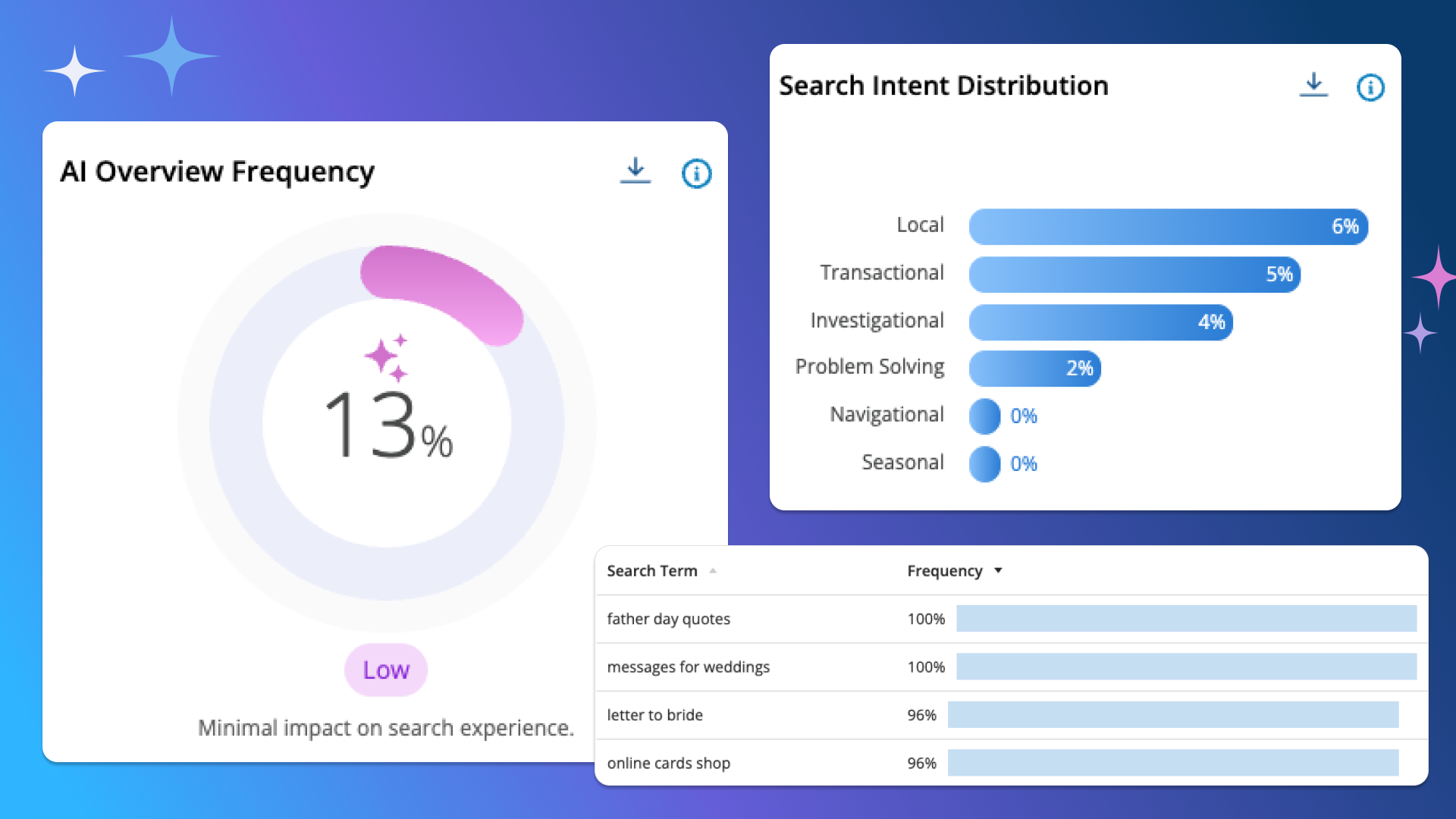

AI Overviews haven’t just shifted how Google presents search results; they’re already reshaping the economics of paid search.
When AI Overviews appear on your most valuable queries, they:
- Intercept attention.
- Push ads down the page.
- Erode click-through rates.
For advertisers, that means revenue leakage even when ads are positioned well.
But it’s not all bad news.
By understanding where and how AI Overviews appear, PPC teams can adapt their strategies, capture more real estate where AI Overviews are weak, and sharpen positioning where they’re strong.
The real question isn’t if AI Overviews will impact your campaigns, it’s whether you’re monitoring and adapting quickly enough to stay ahead.
The AI Overviews challenge: Pain points every PPC team faces
When AI Overviews dominate high-value queries, the effects ripple across every metric that matters. You still get impressions, but CTR can decline, meaning fewer clicks and, ultimately, less revenue.
The danger is also competitive. While you absorb the impact, rivals may adjust their strategies, become more aggressive on queries dominated by AI Overviews, or expand into those with low AI Overview presence to gain visibility more easily.
The hidden opportunities
Yet, AI Overviews don’t appear everywhere, and where they do, their impact isn’t uniform.
- In categories where AI Overviews penetration is still low, advertisers can double down on capturing SERP real estate.
- Where AI Overviews are prominent, the battle shifts: bidding more aggressively to secure more visibility, expanding reach to capture more revenue, and adjusting ad copy strategy becomes vital.
Device-specific behaviors also create opportunities. In many industries, the frequency of AI Overviews varies between desktop and mobile, offering smart teams a chance to redirect spending to where visibility is clearer.
Perhaps the most powerful lever is intent. AI Overviews do not treat every query equally. For example, informational queries may trigger summaries, while transactional queries still leave space for ads to close the deal.
Industry AI Overviews landscape: What the data reveals
Financial services: Why intent splits matter
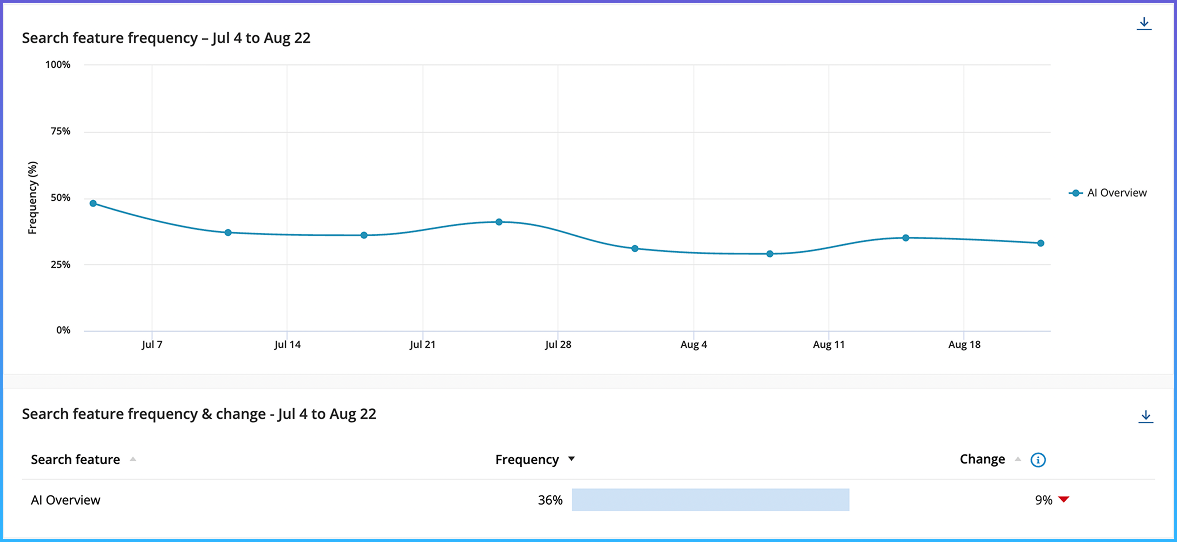
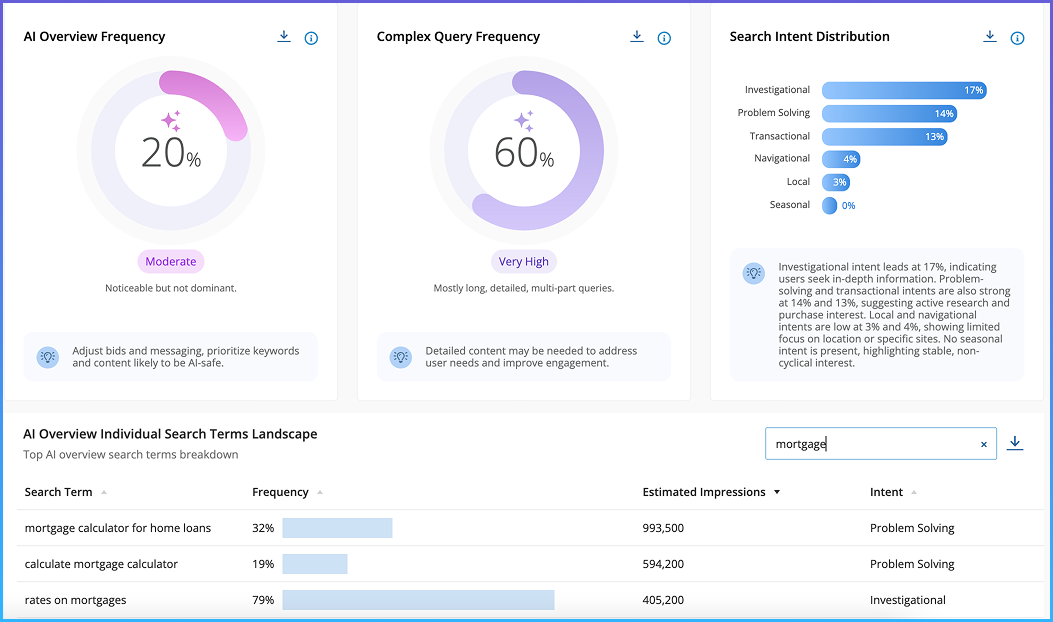
Financial services show a stable presence of AI Overviews, but the real insight lies in the intent breakdown. Around 17% of queries are investigational, with users seeking information or context, while 14% are problem-solving, where searchers want specific answers or solutions.
For advertisers, this rules out a one-size-fits-all approach. Problem-solving queries call for strong, direct ad placements to capture conversions, while investigational queries require a different strategy: competing where AI Overviews provide context but stop short of delivering the final answer, and positioning ads as the natural next step.
Retail: Discount terms as a hidden goldmine
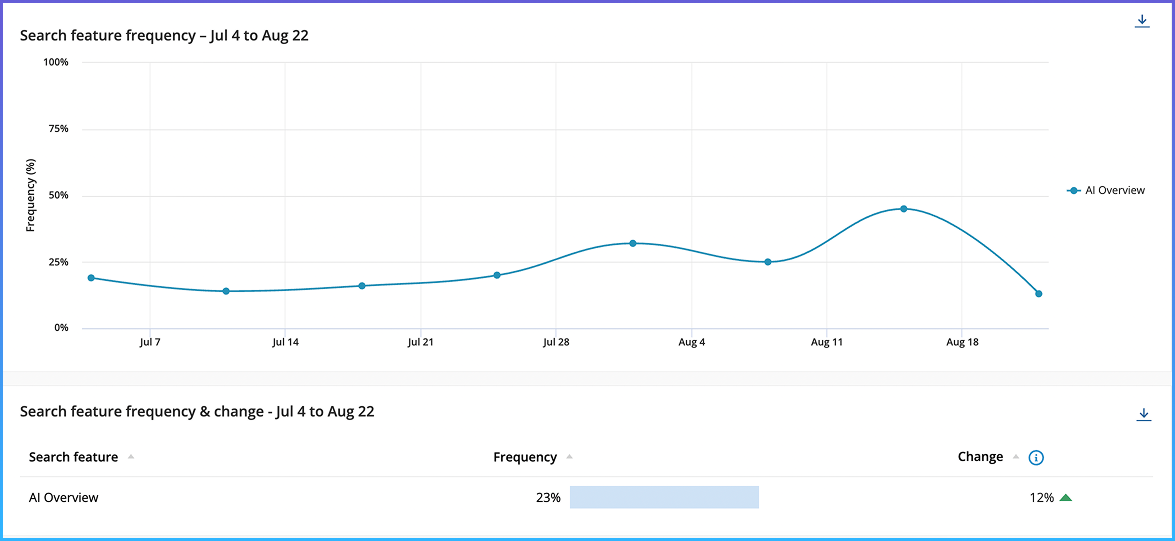
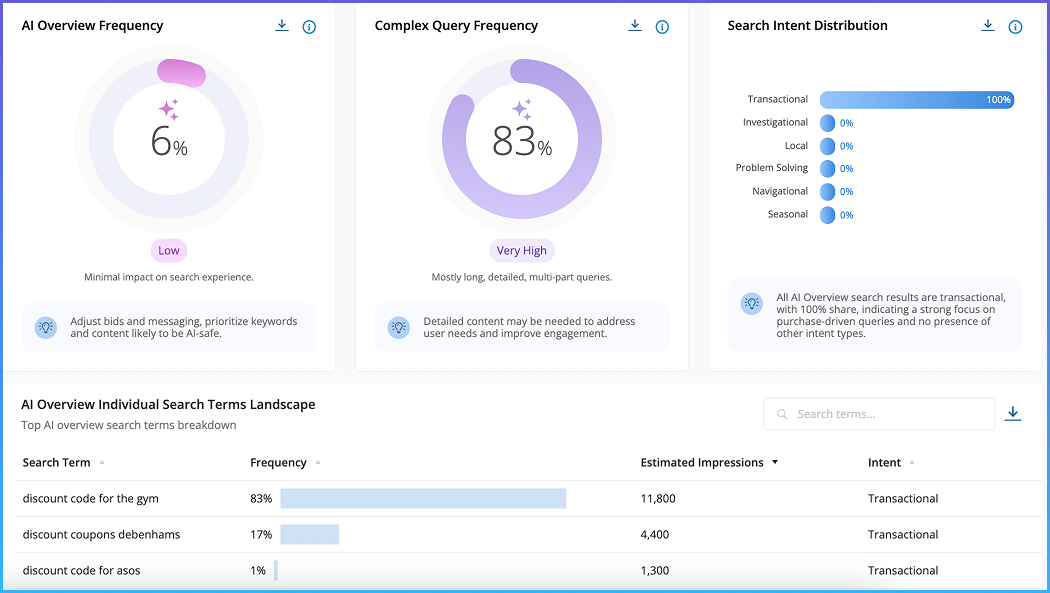
Adthena’s AI Overviews Dashboard for Retail UK shows a lower AI Overviews presence, with frequency reaching 6% for discount search terms.
Despite low AI Overviews coverage, the search term “discount” is purely transactional, capturing users with high intent. That means ads positioned just below the AI Overviews block can still intercept high-value traffic at the moment of purchase.
Travel: A pure opportunity sector

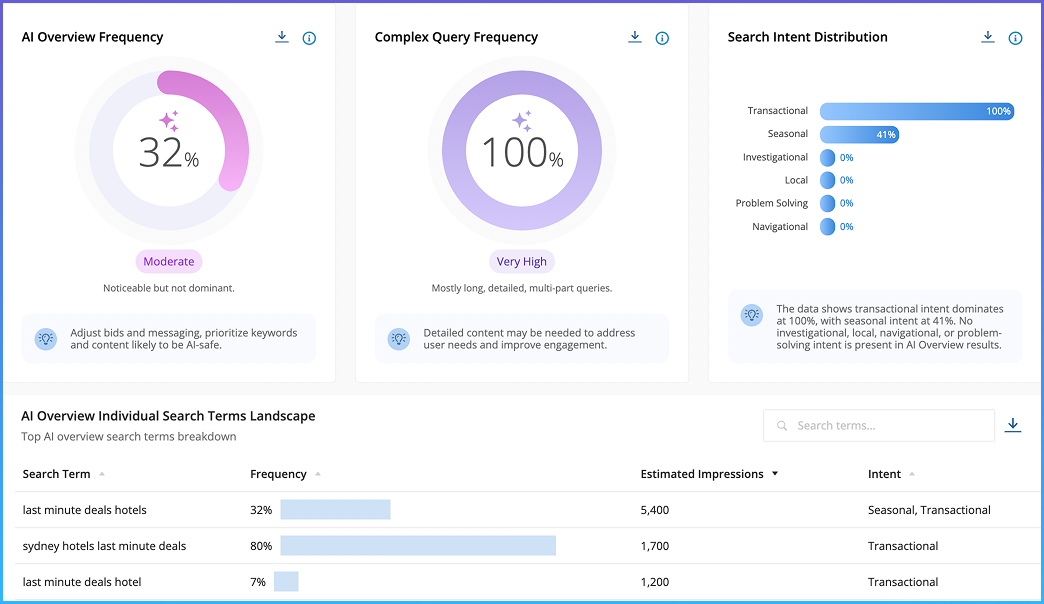
In travel, the picture looks different. If we look at the search term “last-minute deals,” AI Overviews appear only 32% of the time, and every one of those queries signals transactional intent.
This makes the stakes crystal clear: AI Overviews intercept users who are ready to convert.
This creates urgency for travel brands. Protecting visibility through top ad placements is not optional; it’s essential for the remaining part of the booking funnel.
The relative scarcity of AI Overviews also suggests that travel remains one of the industries with the greatest headroom for paid search to thrive, as we previously outlined in our Search Engine Land article, How Google AI Overviews are changing the PPC game.
However, it’s worth noting that niche or specialist travel brands might experience a more significant impact from AI Overviews on their specific, high-value queries.
Healthcare: Elevated but logical AI Overviews presence

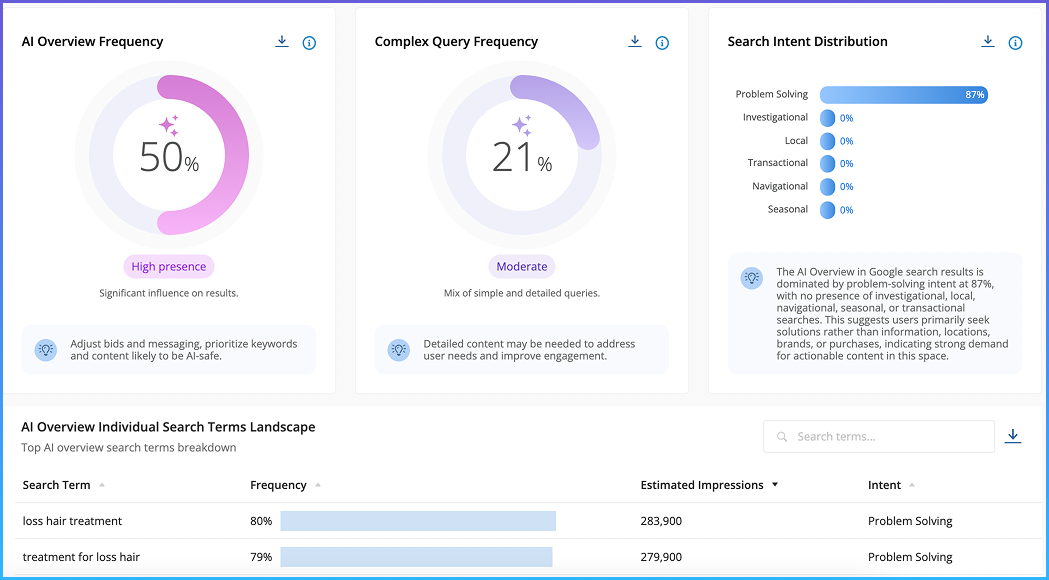
Healthcare stands apart, with AI Overviews appearing on more than half of all queries for the search term “treatment,” the highest penetration across industries. This makes sense given the nature of user behavior: 87% of healthcare queries are problem-solving in intent, and Google has leaned on AI Overviews to provide quick informational answers.
Healthcare advertisers should re-evaluate ad copy based on funnel stage and query type. For high AI Overviews queries, more targeted lower-funnel messaging that emphasizes trusted solutions, professional care, or product options will resonate once the informational need is met. On queries with lower AI Overviews presence, upper and mid-funnel ad copy can continue to capture attention earlier in the journey.
Automotive: A wide open landscape
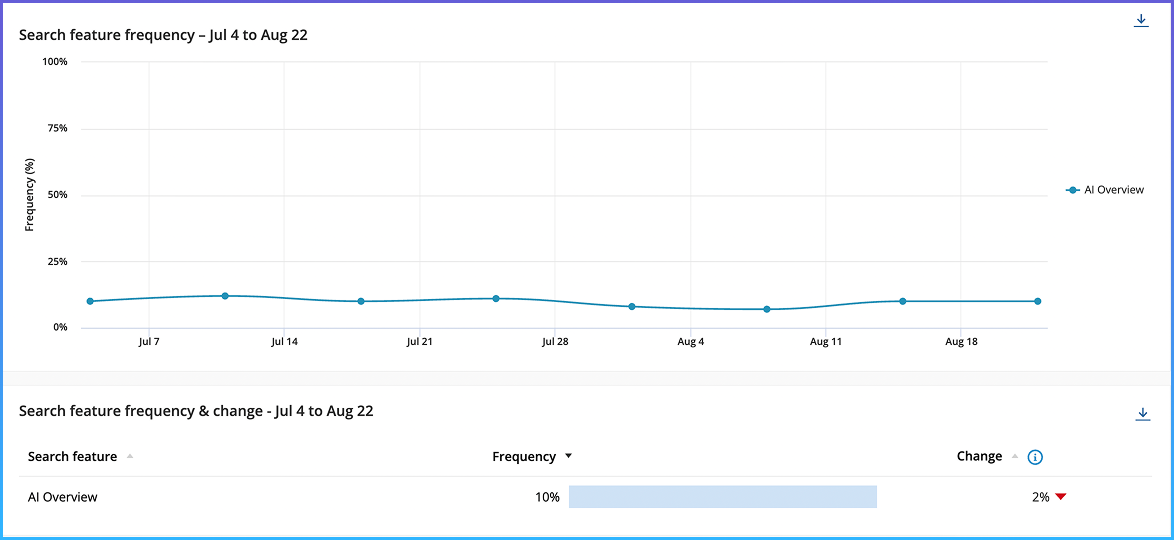
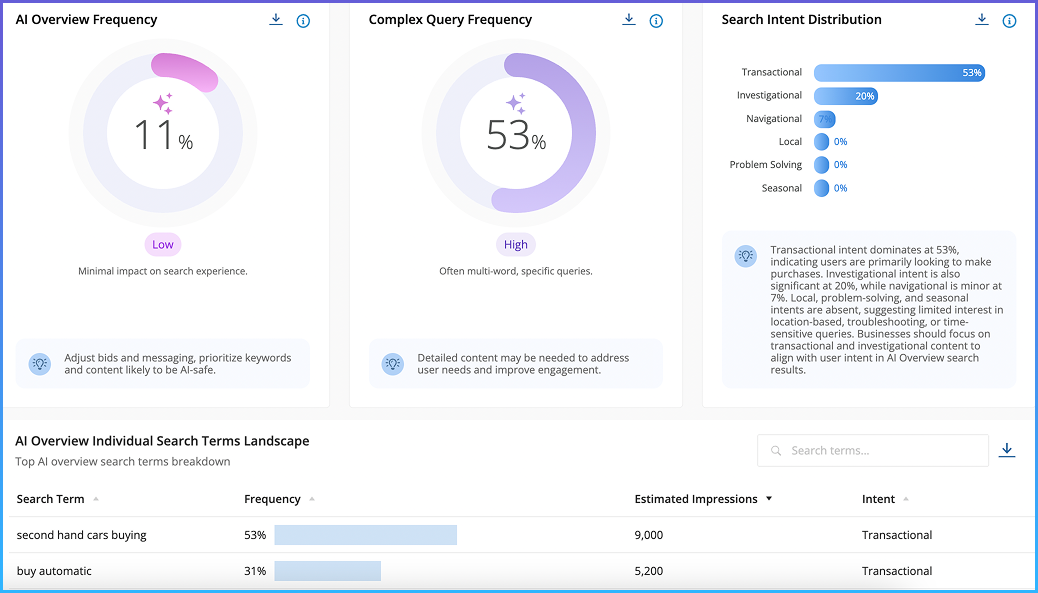
Automotive is perhaps the most surprising category. Despite being heavily research-driven, AI Overviews are almost absent, appearing on just 11% of any buying-related queries. For now, consumers are still moving through the research and purchase funnel without major AI disruption.
For car dealers and manufacturers, this represents a significant opportunity. By investing in paid visibility now, brands can lock in market share before the adoption of AI Overviews expands more aggressively into the sector.
Cross-industry insights
Search is evolving fast, and the presence of AI Overviews varies by industry and location.
While some sectors see relatively low coverage, others experience higher visibility, highlighting the need for advertisers to monitor trends closely and adapt strategies to maintain performance.
How do I know if AI Overviews are impacting me?
Review your CTR
While a decline in CTR doesn’t necessarily mean the presence of AI Overviews, it could be a signal, especially if nothing else has changed in your campaigns.
Differentiate with smarter ad copy
- Many AI Overviews underrepresent brand nuances and emotional triggers. Ads that highlight trust, guarantees, or speed can stand out against AI’s generic summaries.
- Another tactic is creating ad copy variants that counter the narratives of AI Overviews. For example, for the search term “best credit cards for students,” dynamic keyword insertion could help you serve a message like “Rated #1 by Students—Compare Offers Today.”
Get ahead with new intelligence
If you’d like to see how AI Overviews are disrupting different industries, our free Market Share reports will soon include insights similar to those shown above.
In the meantime, you can already use the existing reports to spot trends and competitor movements shaping your market.
Adthena’s AI Overviews Dashboard: Intent-based intelligence
These sample insights only scratch the surface. Adthena’s AI Overviews Dashboard reveals the intent patterns behind AI Overviews appearances and that’s where strategy becomes actionable.
Each advertiser gets a completely tailored view of their competitive landscape. You can select specific search terms or categories and even see how AI Overviews impact the terms your competitors bid on.
Where other solutions only capture snapshots of AI Overviews once a week or a month, Adthena continuously indexes search results multiple times per day. This gives advertisers far more accurate and timely visibility into AI Overviews frequency, essential for those relying on Google Ads as a revenue driver, especially as ads begin surfacing directly within AI Overviews.
Unlock advanced AI Overviews intelligence
By tying AI Overviews visibility to intent, advertisers can prioritize spend, messaging, and positioning with precision.
Without visibility into how AI is disrupting your PPC campaigns, revenue forecasts will be disrupted, performance gaps will remain unexplained, and brands will be left behind while competitors adapt faster.
Want to see how AI Overviews are impacting you? Book a demo today to see these insights tailored to your brand.


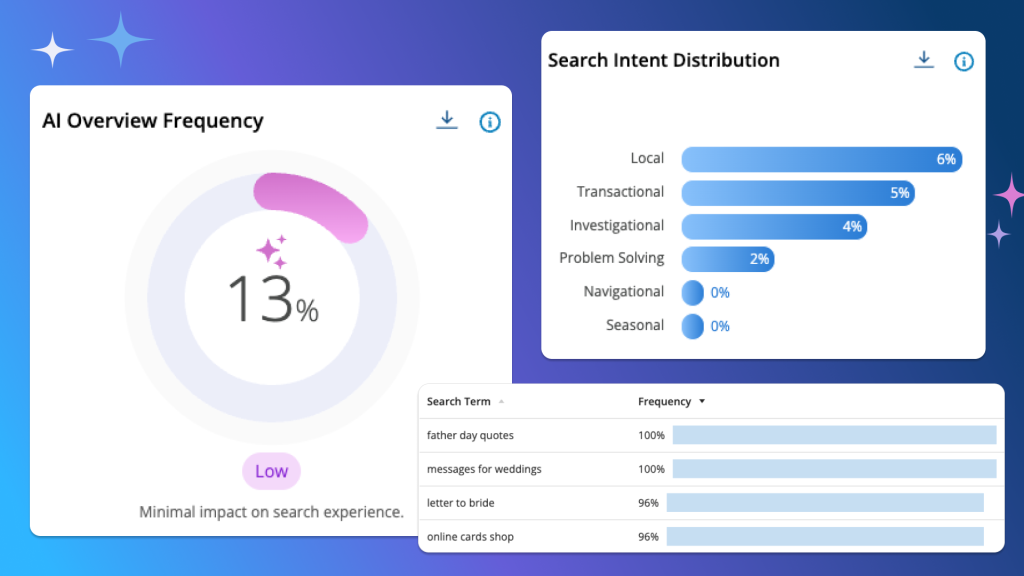




Recent Comments